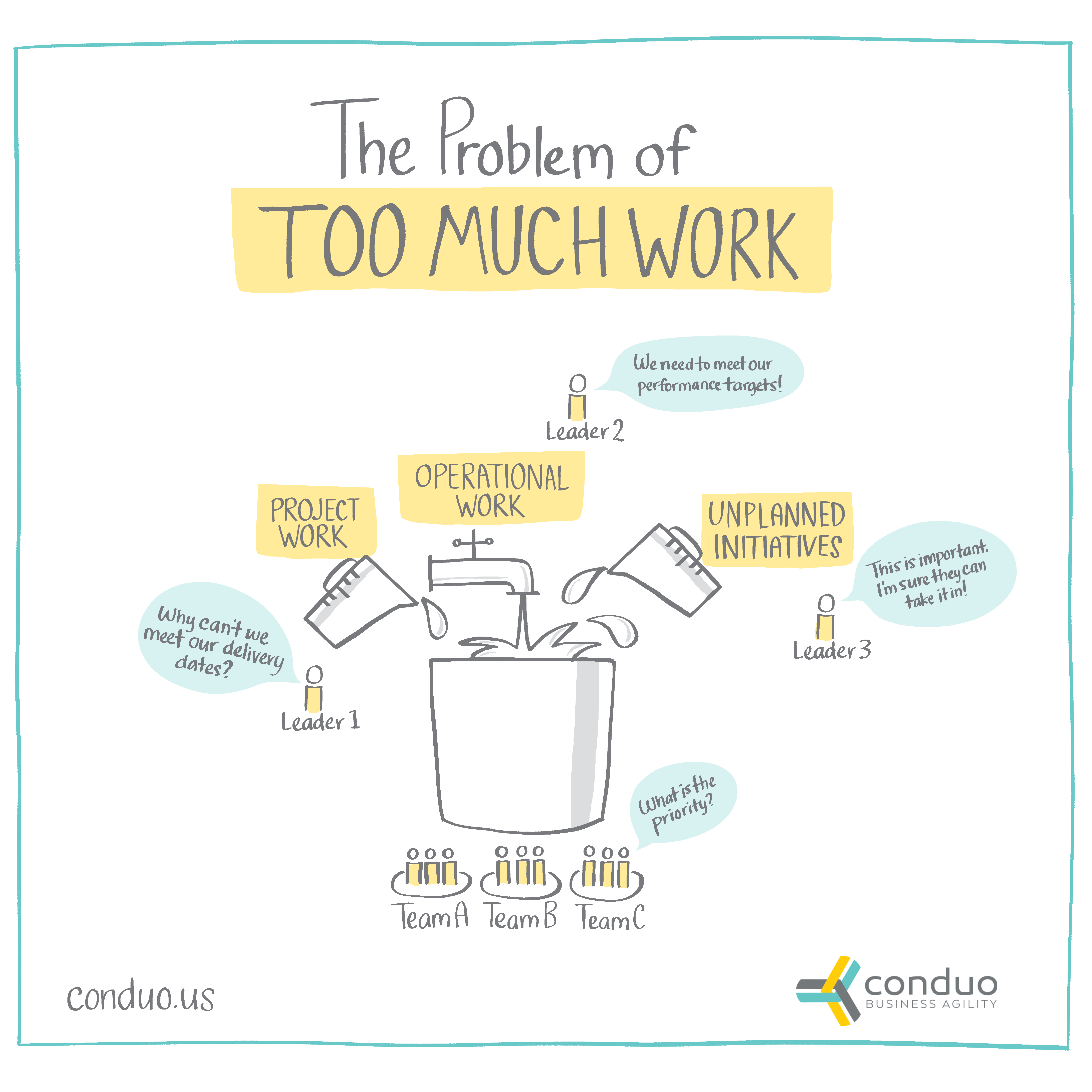How to Resolve the Problem of Too Much Work

By Julie Springer
April 28, 2022
Every organization that comes to us for help with planning has the same problem - the teams are overloaded with work. There are too many projects going on at once, too many commitments to meet and too much stress and pressure. Team members struggle to balance the day-to-day operational work with planned project work and new, high-priority initiatives that weren’t planned for. Everyone feels like they are constantly putting out fires and it is difficult to predict when anything will be delivered. This causes burn-out, disengagement and frustration.
Unfortunately, teams often get the blame for not managing their work and delivering on time. They are told they need to do a better job with prioritizing, managing dependencies, communicating and using their planning tools. I’m all for helping teams to improve their processes, but these changes won’t make a big difference unless the root cause is addressed.
Understanding Root Cause
What is the cause of this problem and why is it so difficult to solve?
While there are many, interconnected reasons why teams are overloaded with work, one of the most common and consistent issues is the way leaders are working together. To better understand this issue as a root cause, we can apply the 5 Whys Technique.
With the 5 Whys Technique, you start with a problem statement and ask, “Why does this happen?” Choose a strong and important reason for why the problem occurs and write it down. Then, for the reason you just wrote down, ask, “Why does this happen?” Repeat this a total of five times, or until you have identified a meaningful root cause.
Our problem statement is: Teams are overloaded with work.
- Why? We have conflicting priorities - everything is important.
- Why? Leaders are not working together to decide what is most important.
- Why? Leaders work in silos, where each leader is responsible for their area but not taking responsibility for the collective impact of work across silos.
- Why? Leaders do not have an effective process for working together to set the vision, develop the strategy and plan and prioritize work across departments and programs.
- Why? The organizational structure, culture and reward-system does not support this.
Getting to the root cause and identifying the process gaps and structural barriers to why teams are overloaded with work is useful because it provides an opportunity to address the core of the problem, rather than just applying superficial fixes. Typically, people can see that the problem of too much work is caused by conflicting priorities, but they don’t go any deeper toward understanding or working on the root cause and so the problem continues.
Resolving the Root Cause
The problem of too much work needs to be addressed from both the team level and the leadership level. However, the key to success and the most important place to start is at the root - working with leaders to rethink what they are responsible for and how they need to work together.
Leaders need an approach to planning that supports the entire system, not just their own area. They need to work together in what Patrick Lencioni calls a “First Team,” where the leadership team’s collective work is the top priority for each leader, rather than the work of the area they lead.
A New Way of Planning
At Conduo, when we work with organizations to apply our Outcome-Driven Planning approach, we start with the leadership team to shift the way they work and plan together.
- We share the concept of the leadership team as the “First Team” and spend time defining what that means for them and how they will work together differently.
- We develop a plan that is based on defining outcomes, rather than activities, so that leaders are providing the vision for what problems need to be solved, without imposing a solution.
- We guide the leaders in setting a small number of shared goals, rather than a collection of many goals across organizational silos. When leaders are aligned on priorities, they can help their teams to focus on what is most important instead of pulling them in many directions.
With this foundation in place, we establish a quarterly planning process that accounts for the strategic and operational work.
- Teams make the plans for the quarter, based on their capacity, pulling in work that aligns to the outcomes and shared organizational priorities.
- They execute on the quarterly plan in 2-week iterations, adjusting their plans as they go, based on what they were able to accomplish, any changes and what they are learning.
It takes time, effort and commitment to put this process into place, but it is highly successful because it starts with the root of the problem. Leaders must work together to provide the clarity, alignment and focus that teams need to have a sustainable pace to their work and deliver predictably.
Meet with us to learn more about how this can help your organization.



